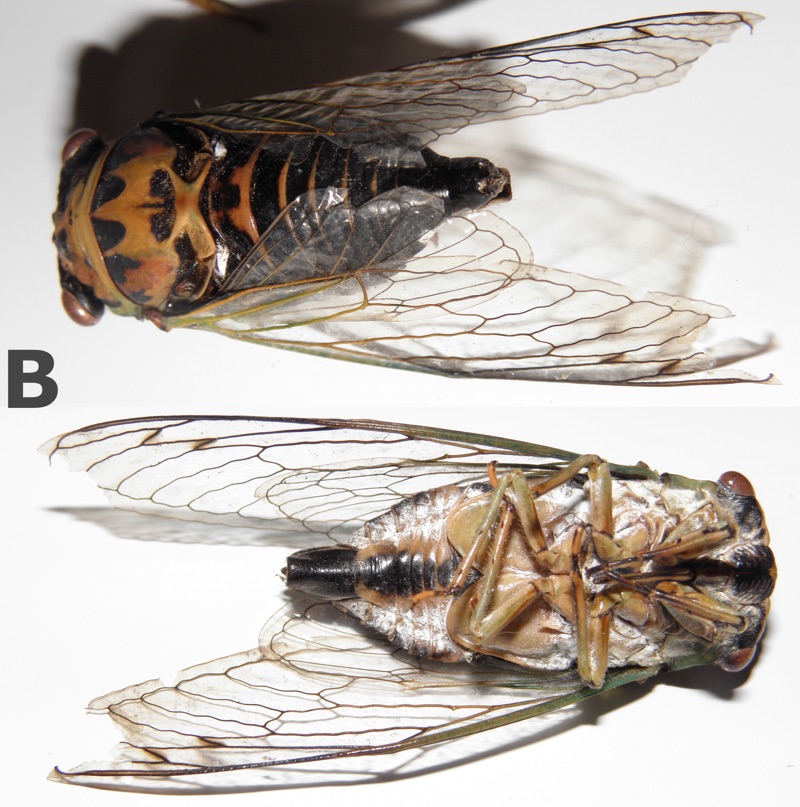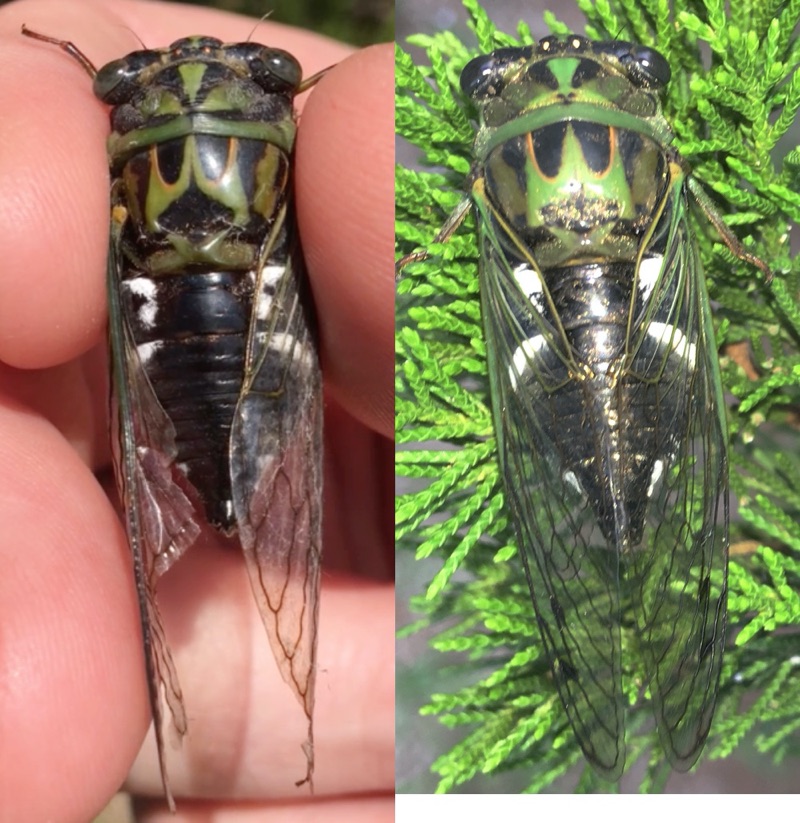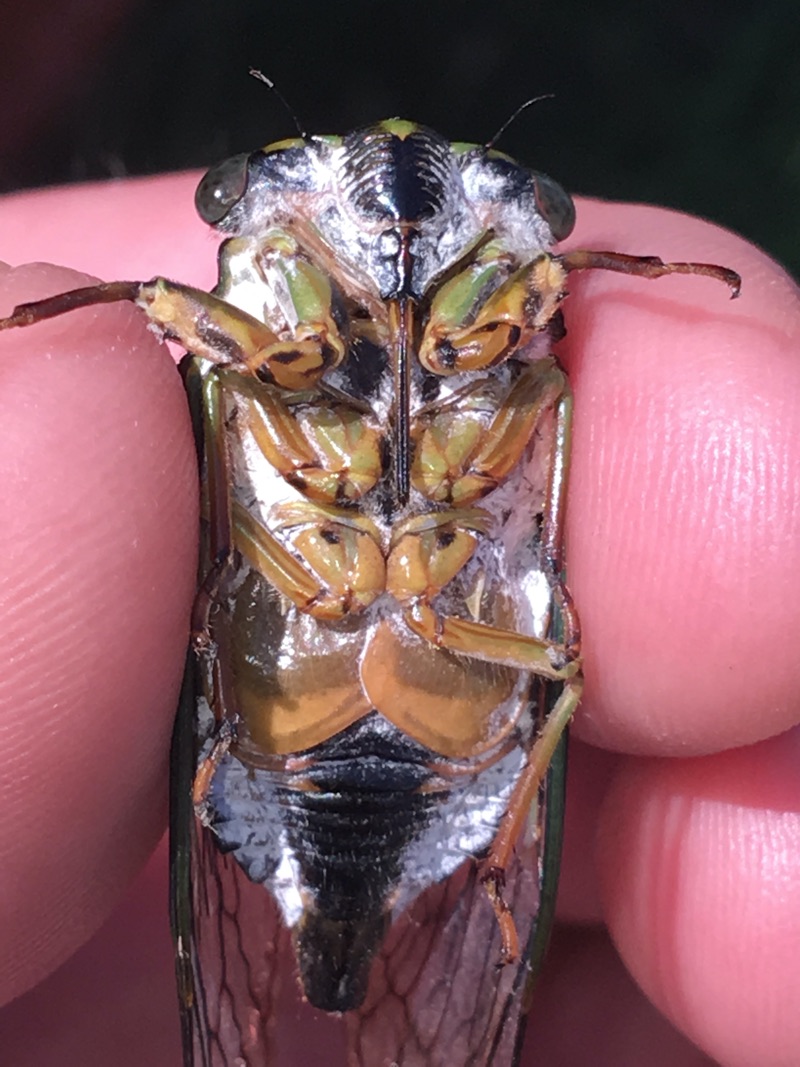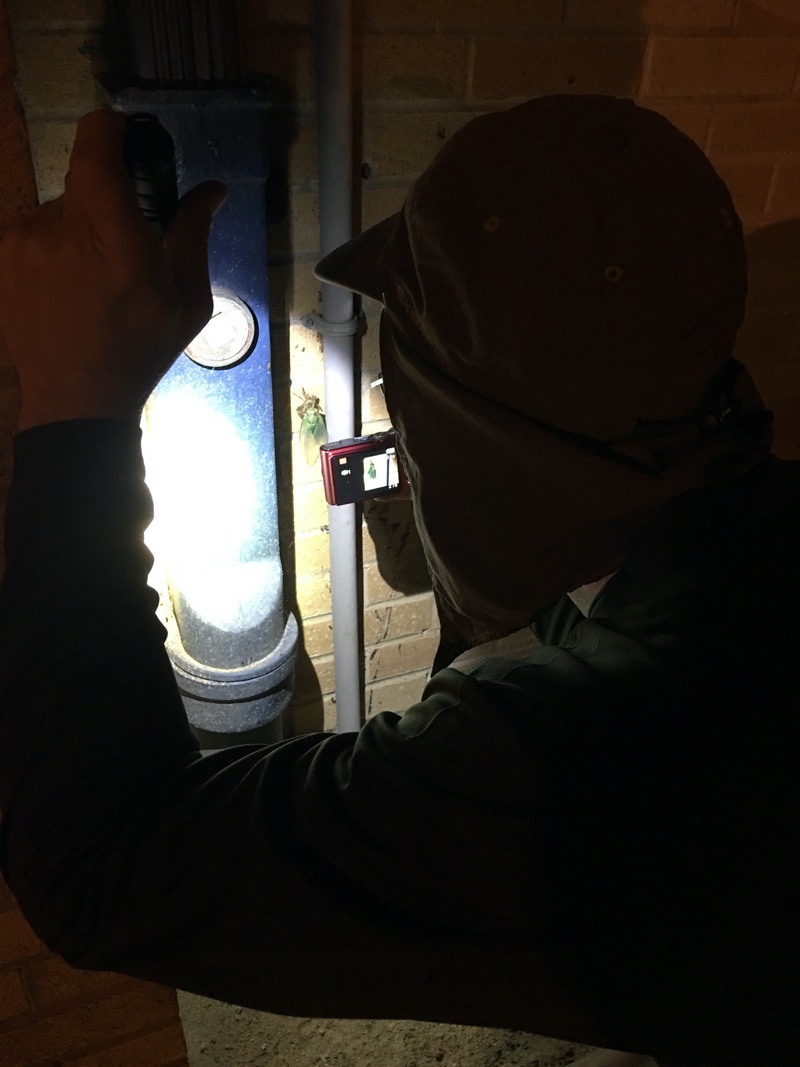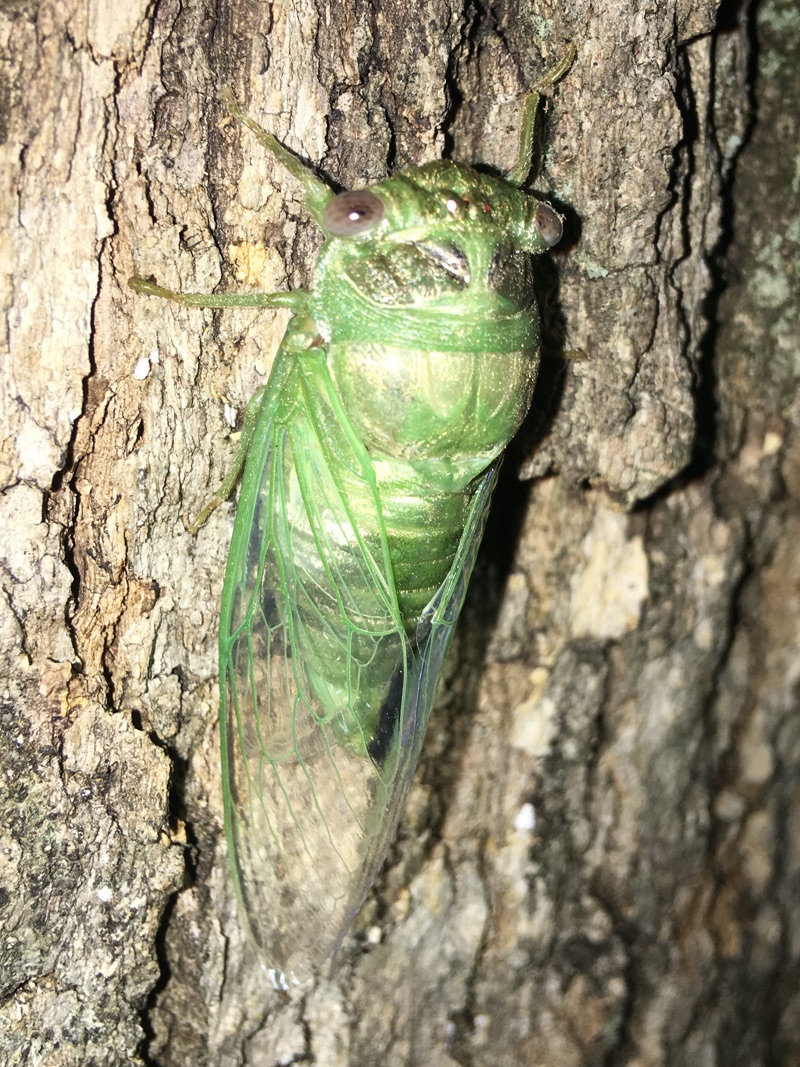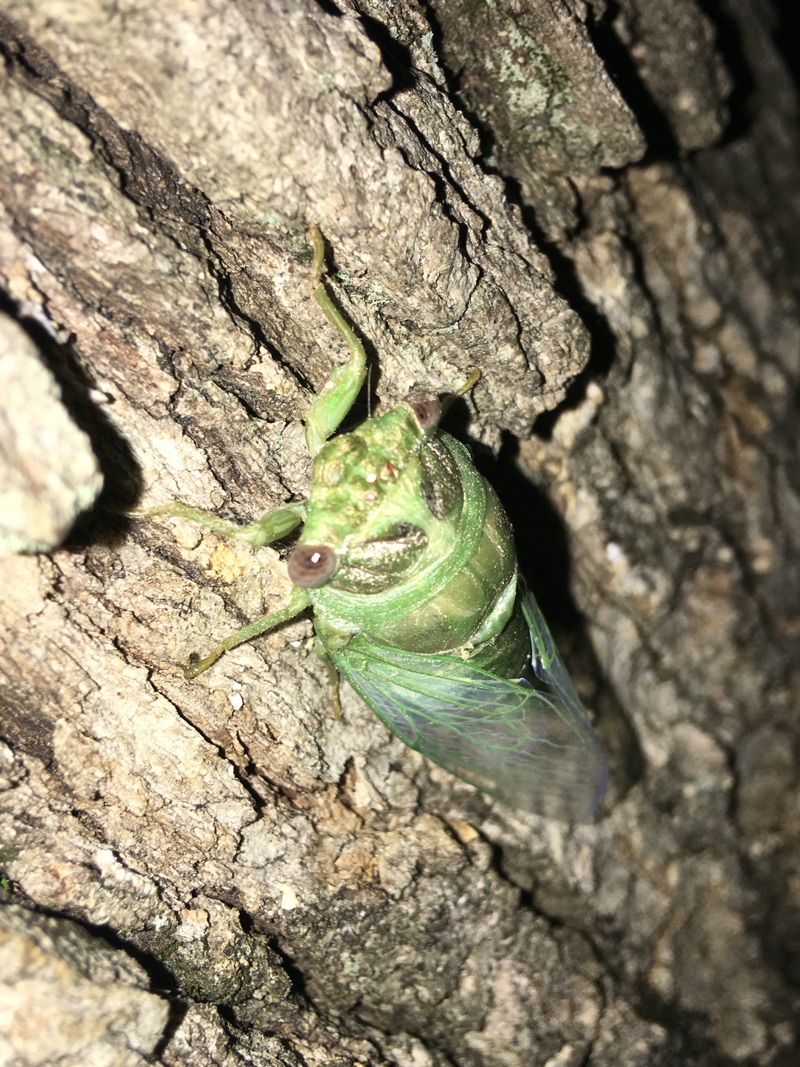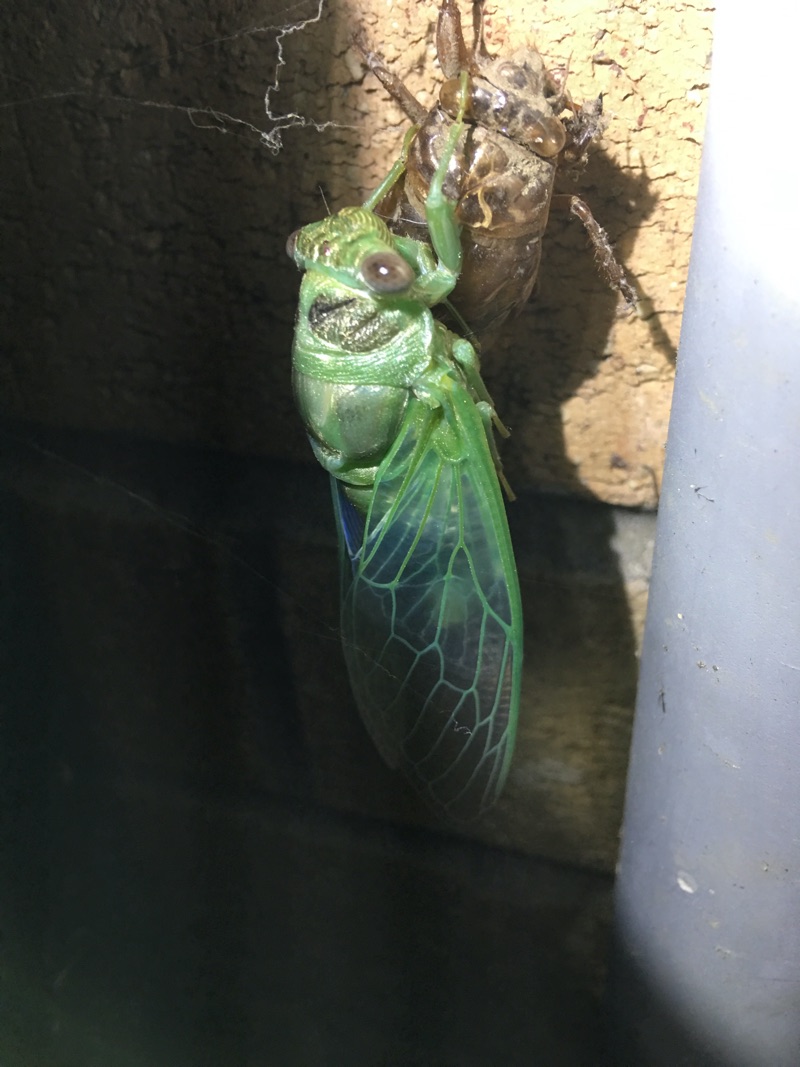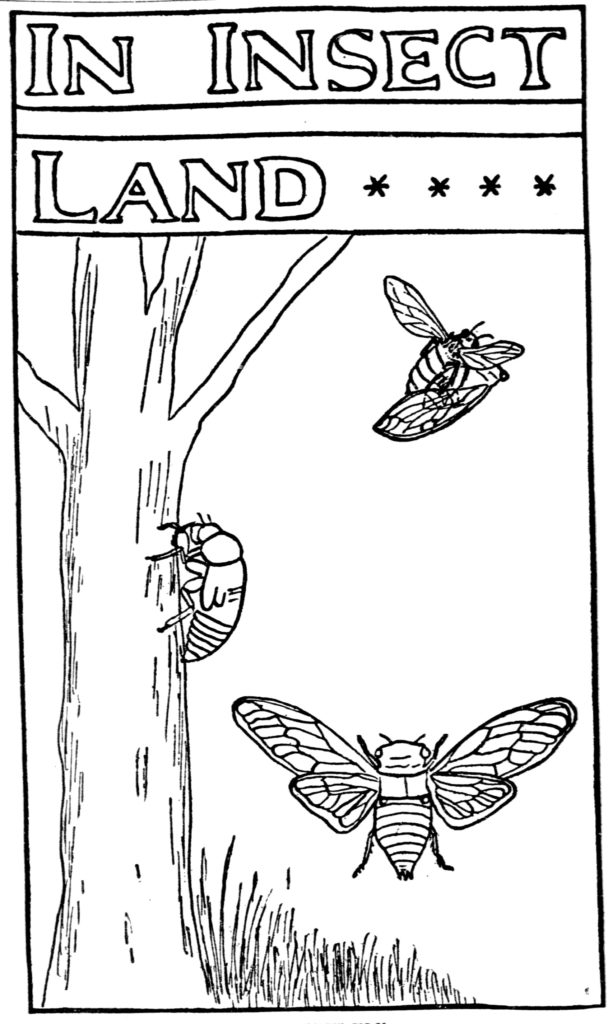Once September rolls around in New Jersey (USA) temperatures start to drop, as do the cicadas. Labor Day weekend is a three day last hurrah for the summer. Folks have barbecues, take one last trip to the beach, or one last fishing trip to the lake. It’s one last chance to have some fun before the kids go back to school, the weather gets too cold to wear shorts, and hurricanes start ripping up the coastline. This past Labor Day weekend I found myself at Washington Crossing State Park in Titusville, NJ. You might have guessed that this park marks the location where founding father General George Washington famously crossed the Delaware River. I think of it was a place to find Neotibicen linnei and Neotibicen winnemanna in the same location.
Some video of their calls:
N. linnei and N. winnemanna belong to the “Green Group” of Neotibicen cicadas. All the cicadas in this group look very similar, and you have to tell them apart by their song or key morphological differences. Even with sound files of their songs to reference, photos and notes, telling them apart can be vexing and bemusing. In some cases species mate and form hybrids which make it even more difficult to tell them apart.
Some images:
A is likely an N. linnei, and C is likely an N. winnemanna.
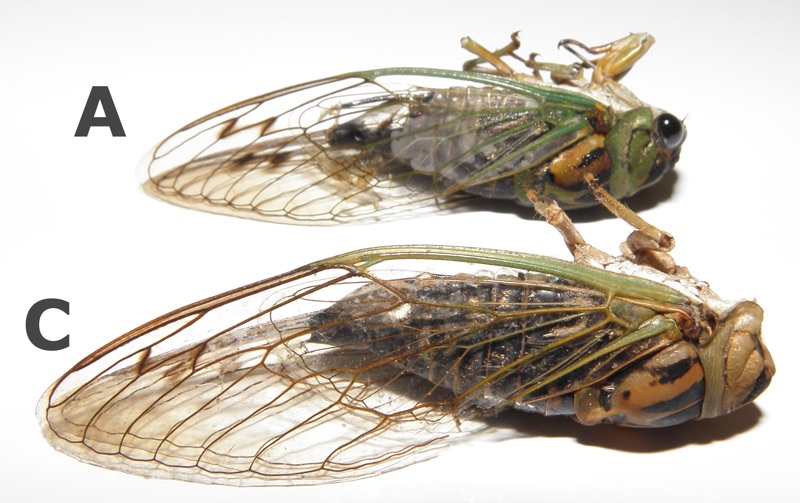
Probably an N. linnei although it lacks the wing bend. More black than beige, although that isn’t always a sure indicator of species.
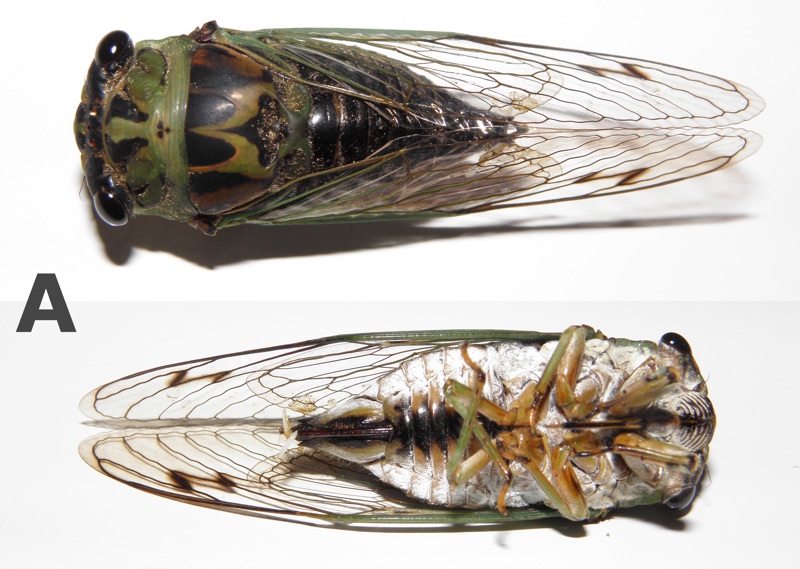
Definitely an N. winnemanna because of all the beige on its abdomen. Yes, its head is missing,
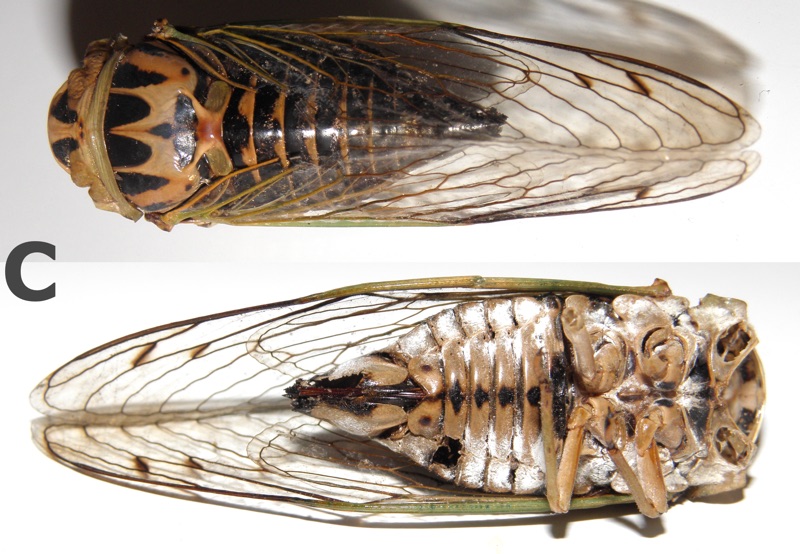
After wandering the park for a few hours I was rewarded with a few dead specimens. One with eggs still stuck to its ovipositor, which was neat to see. I also recorded their calls — unfortunately no hybrids in the mix.
Part of the fun of traveling to see cicadas is visiting the place where the cicadas live. Washington Crossing State Park is far from the industry and urban decay New Jersey is known for. If you like scenic rivers, pastoral landscapes, American history, farmers markets, and antique stores, this area is for you. For me, it’s a nice place to observe cicadas. The park features many acres of deciduous and evergreen trees, perfect for cicadas. You can also walk the bridge to the Pennsylvania side of the river, where you’ll find more N. winnemanna than N. linnei.
Cicadas will be done mating before the end of September (actual date differs by location), and start dropping from the trees before the leaves being to change color. Go out this weekend and look and listen for the last cicadas of the year.
Oh yeah, here’s the B cicada:
